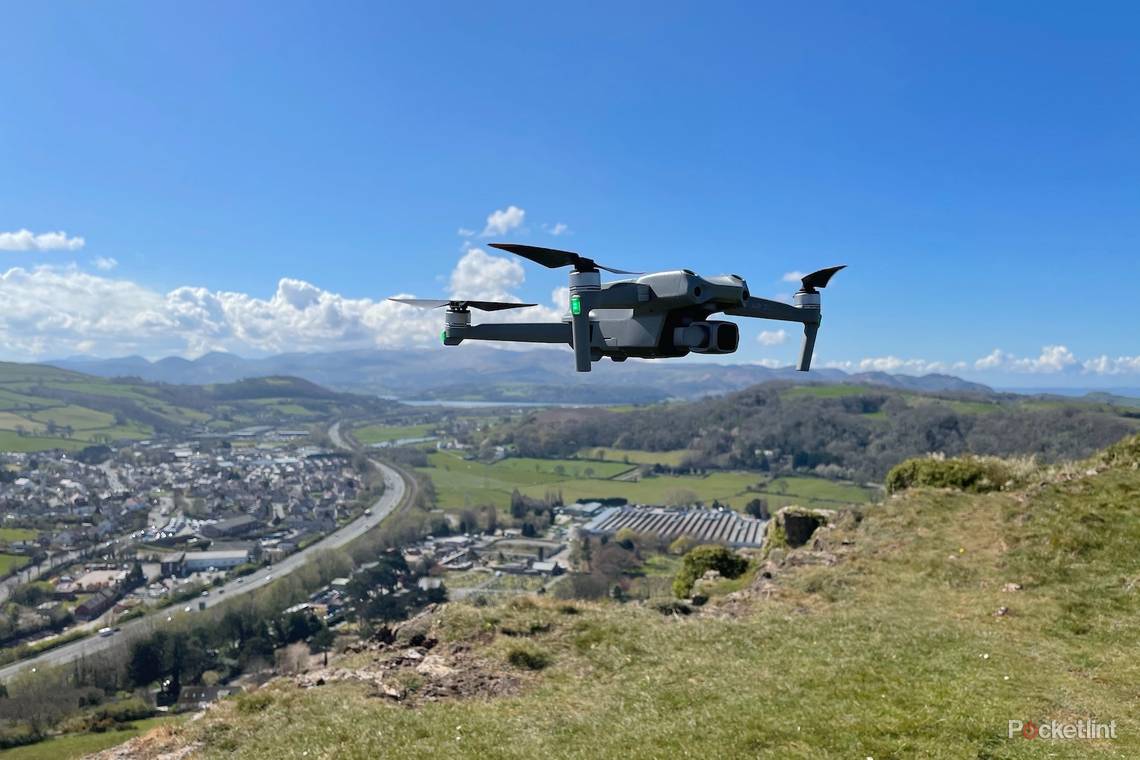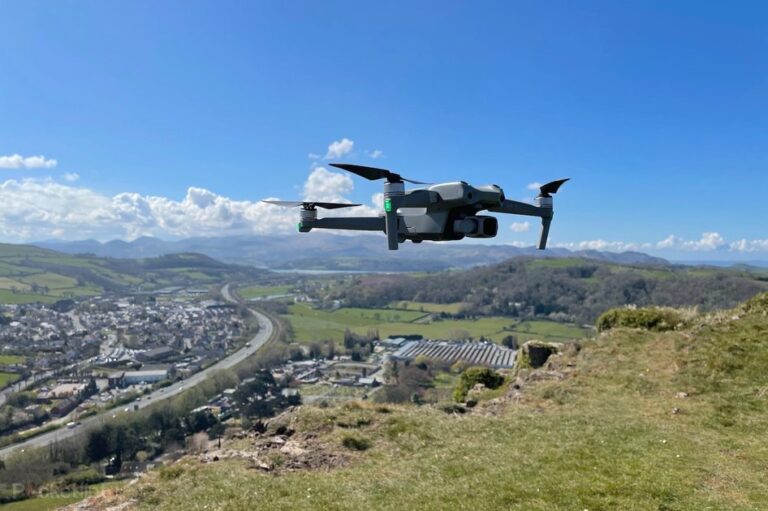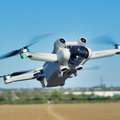(Pocket-lint) – DJI has long been the champion of the consumer drone market, pushing boundaries and implementing technology that makes it easy for the average person to do previously impossible aerial photography and videography.
It was undoubtedly through the Mavic series that it saw its success reach new heights, but over the last few years, DJI has had an increased focus on its smaller, more nimble drones.
It ditched the Mavic name with the Mini 2 and has followed up the excellent Mavic Air 2 with a new-and-improved Air 2S. No ‘Mavic’ moniker in sight.
The DJI Air 2S has a lot of fantastic specs and capabilities built into a neat, compact body that’s small enough to fit in your hand when it’s folded up. On the whole, it’s a fantastic drone.
Now, over a year after its launch, the Air 2S remains one of the best drones out there without spending more than four figures. It offers advanced features, a great camera, and is easy to fly, what more could you need?
To get a 1-inch sensor in a DJI drone used to mean spending over that sum and getting something much larger as a result. Granted, the older Mavic 2 Pro is still foldable, but it’s nowhere near as compact as the Air 2S.
What’s more, the Air 2S drone still features a lot of the same capabilities of its bigger, more expensive siblings. It’s a win-win. It’ll cost you less, do mostly the same stuff, and takes up less room.
Yes, there are some caveats that maybe got lost when DJI was busy singing the praises of its latest portable flying camera, but don’t let those put you off. This is still easily one of the best drones DJI has ever made.
DJI Air 2S
4.5 stars – Pocket-lint recommended
- 1-inch sensor offers super pictures
- Advanced obstacle avoidance
- Portable and easy to carry around
- Great battery life
- ND filters in the Fly More combo are a nice touch
- Rolling shutter effect is quite bad when moving quickly
- 4K/60 crops heavily into frame
- QuickShot shoots at Full HD
- It’s not exactly cheap
What’s new?
For the most part, the DJI Air 2S looks just like the Mavic Air 2. It has the familiar Mavic-style sharknose front, and arms that fold inwards to make it compact and easy to carry around.
The new stuff isn’t necessarily all that visual. Improvements are almost entirely performance enhancements. It has a bigger 1-inch sensor and more advanced sensors for spotting obstacles. That means better photos, better video quality, and much smarter obstacle avoidance.
That’s not to say there aren’t any visual changes. For example, the extra upward-facing obstacle sensors are easy to spot on the front. Plus, the propeller blades now have bright orange tips – just like the Mini 2 – and the camera housing is silver rather than black.
If it ain’t broke…
- Dimensions (unfolded): 183 × 253 × 77mm
- Dimensions (folded): 180 × 97 × 80mm
- Weight: 595g
DJI’s Mavic design was among the company’s best ideas. By making it possible to fold the drone into a small enough size that it can easily fit in your backpack, it made quadcopters accessible. That foldable design ethos is still here with the Air 2S, which is small enough to fit in your hand when it’s folded.
Like its predecessors, the top arms fold outward, while the bottom ones pivot down and out to form the traditional quadcopter shape. Those front/top arms sit slightly higher, too, with feet that rest on the ground to ensure the camera system has enough space beneath it.
This particular camera is mounted underneath the nose and mounted to a three-axis mechanical gimbal, meaning that any movement or shakiness is counteracted – resulting in smooth and sharp images and video. It’s a pretty familiar mechanism by now, and has worked well in previous models.
The removable battery makes up part of the body of the drone too. In fact, the rear two-thirds of the drone is practically all battery. It’s held in place by a couple of internal clips that you can release by pressing a button on either side of the battery. It’s a secure system and keeps it in place unless you really want to take it off.
As you’d expect, the drone ships with the redesigned controller – the same one we first saw ship with 2020’s Mavic Air 2. It’s a larger, chunkier controller than the old control pads, but it’s practical. It’s easier to grip for one, and the phone holder is much sturdier and less likely to mess with the buttons up the sides. Plus, it’s easier to fit larger phones in it.
Improved optics
- 1-inch CMOS sensor, 20MP (2.4μm pixel size)
- 5.4K video to 30fps, 4K to 60fps
- Digital zoom/sensor crop to 6x
Just a few years ago, if you wanted really good quality images and stills from a DJI drone it meant spending quite a lot of money. The Phantom 4 Pro was the first consumer-ish drone with a 1-inch sensor, before it was followed up by the Mavic 2 Pro. Both of those drones are significantly more expensive than the Air 2S.
Of course, in the time since launch, we’ve also seen the impressively capable Mavic 3 hit the scene with an even larger sensor, but its hefty price tag puts it out of reach for most consumers and hobbyists. The Air 2S, on the other hand, remains relatively affordable.
With the Mavic 2 Pro sized sensor crammed into the Air 2S, as you might expect, the results are very good. We’ve had some time in the air testing a few of the different modes and the photo quality is a huge improvement on what the older Mavic Air 2 managed.
That’s no surprise really. Larger sensors mean bigger pixels, which in turn means more data is captured – so you usually see better colours and detail as a result of ‘more light’ reaching each pixel source at the capture stage.
As for video, it can go up to 5.4K resolution at 30fps, or 4K at up to 60fps. But there’s something of a caveat here: you don’t get to use the full sensor width when you shoot 4K/60, it crops quite heavily into the frame, so if you’re after those much wider landscape shots, you’re not going to get those at 4K and 60fps. Shoot at a lower frame rate, however, and it’s not a problem.
It’s not to say those cropped shots look bad. You’ll still get vibrant and detailed shots with great stability. You’re just missing out some of the scene – which is fine if you’re looking for a tighter shot, but won’t work for all instances.
The Air 2S also features digital zoom when shooting video which can reach up to 6x depending on what resolution you’re shooting in. Caveat here: shooting in 4K means you get 4x zoom maximum, and once you get to that point you’ll have no desire to push it any further on the basis of quality grounds.
The 2x zoom results already lack sharpness, so once you get to 4x zoom, edges of buildings and objects lose detail and sharpness. It gets quite ropey at times. Despite it being a useful tool, the zoom quality isn’t all that great and isn’t something we foresee using all that often due to those results.
Another flaw we noticed was some pretty noticeable rolling shutter effect. With slow-moving and panning shots it’s not so much an issue. It’s more when the drone is flying around a subject quickly, the edges and background get quite jittery. You’ll notice this, especially when using some of the drone’s faster-moving QuickShot modes. While your subject in the centre of the shot looks smooth in the Orbit/Helix modes, the wider you look outside that centre point the more extreme the rolling shutter effect is.
Obstacle avoidance, automation and battery
- Four-sided obstacle avoidance
- 3,500mAh battery capacity
- 31 minutes max flight time
- 8GB internal storage
- microSD to 256GB
DJI drones have led the way when it comes to obstacle avoidance and smart flight paths, and that’s not likely to change any time soon. This latest drone features sensors to avoid obstacles on the front, back, underside and the top.
The company also says it uses something called ‘binocular zooming technology’ – which means the drone can pick up obstacles from further away and detect when they’re coming toward it. When you’re flying manually the Air 2S will stop if it senses an oncoming obstacle.
More impressive than just stopping is APAS (Advanced Pilot Assistance Systems). It’s a system that – when enabled – will automatically find a path around an object in its way. If there’s nothing but clear sky above for the most part it defaults to just flying over – so if you try to fly it into a mountain top, or a wall, it won’t let you. It just makes its way over, keeping a safe distance.
There’s something of another caveat here: this works when you have the flight mode set to normal, but not cinematic mode. That latter one is where the drone moves slowly for those cinematic style shots. In this mode, it just stops moving and bypassing isn’t an option in the settings.

Then there are all the impressive automated flight modes like QuickShot, which has a number of different preset patterns: Rocket shoots straight up; Orbit goes around you; Dronie goes up and away; and Helix is sort of a mix of all three.
More impressive than all of them, however, is MasterShot. All you have to do is select your subject in MasterShot mode, hit ‘Start’ and it’ll set off and perform a handful of different automated and dramatic movements, keeping that person or location in shot. The DJI Fly app can then also quickly chop together and edit with background music and make a video out of it, and you’ve barely had to lift a finger.
Another caveat here: it can’t do any of the clever obstacle avoidance stuff when in these automated modes, so before starting you have to make sure you’re in a nice open area. Plus, it shoots QuickShots in 1080p, not at a higher resolution. The capture results are pretty incredible though – you really don’t need to be an advanced pilot to get these awesome effects.
Now, if you want similar effects but in higher resolution video you can just fly the drone in a semi-automatic mode. When in normal mode you can draw a rectangle around your subject and then choose a number of modes to follow them. You can have the drone run parallel, or follow behind, or even automatically circle around them as they move. Choose POI mode and you can manually fly the drone and keep a locked distance from the person or object, so you can create an orbit-like effect by flying around them yourself.

As for general performance and battery, it was virtually flawless in our testing. The Air 2S has a battery life rating up to 31 minutes, but of course on the relatively windy coast that we tested it on, that’s not really doable. However, we didn’t ever really get anxious over the battery life.
With more than 20 minutes in the air, we still didn’t get any low battery warning, which is a darn sight better than a lot of the older models. What’s more, the Air 2S handled the blustery conditions without an issue. You could see it fighting to correct itself in the wind, but the footage stayed nice and smooth thanks to the 3-axis gimbal.
The other thing worth mentioning is that the new drone features ADS-B AirSense tech – which essentially lets you see on your map when there are manned aircraft nearby, such as planes and helicopters.
Should you get the Fly More combo?
- Two additional batteries (three in total)
- Charging hub – charges all batteries
- Ships with four ND filters
- Carrying bag included
While battery life should be pretty strong on the DJI Air 2S, the 25-27 minutes real-world flight time might not be quite enough if you’re planning on a long stint out in the hills.
Extra batteries are always a good idea – and the Fly More combo gives you more than just extra batteries. You get a charging hub that allows you to charge all three batteries at the same time, plus a little case with four ND (neutral density) filters.
These filters attach to the front of the camera and offer varying strengths. If you’re shooting on a bright day, or shooting near a lake or the sea, it’s always worthwhile to have an ND filter or two kicking around to reduce some of the harsh light and highlights.
The kit comes in a bag that can carry all of it, meaning you don’t have to take your own backpack if you don’t want to carry a big bag around with you.
Of course, getting the Fly More combo pushes the cost up by £270 in the UK, so it’s not cheap, but is a far more cost-effective way to get extra batteries and accessories. Just one Intelligent Flight Battery for the Air 2 costs £105 on its own, while the charging hub would set you back £49, and the shoulder bag costs £69.
The previous Air 2 sought to bring high-end features into a smaller form factor – and the Air 2S ups the ante further. Its 1-inch sensor offers great stills photography, while video capabilities outshine some more expensive drones.
Writing by Cam Bunton. Editing by Conor Allison.


